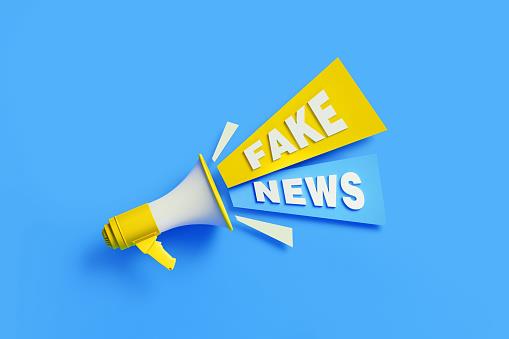Search here

14-Nov-2022
How to combat fake news and disinformation
In an age of social media and the 24-hour news cycle, it can be hard to know what to believe. Every day, we are bombarded with information from all sides, and it can be difficult to discern the truth from fiction. This is especially true when it comes to news and current events. With so many voices vying for our attention, it can be easy to fall victim to fake news and disinformation. So how can we combat these forces and ensure that we are getting accurate information? In this blog post, we will explore some tips and tricks for identifying fake news and disinformation, so that you can stay informed and make informed decisions.
Identifying fake news
In the age of the internet, it's easier than ever for fake news to spread. Fake news is often sensationalized and designed to evoke an emotional response, which can make it more difficult to spot. There are a few key things to look for when trying to identify fake news:
- Check the source. Is the story from a reputable news source, or is it from a blog or website that you've never heard of? If you're unsure, try doing a quick Google search of the source to see if it's credible.
- Take a close look at the article. Does it contain any factual errors? Are there spelling or grammatical errors? These can be signs that the article is not legitimate.
- Check for bias. Is the article one-sided or does it present both sides of the story? Fake news is often biased in order to persuade readers to believe a certain way.
If you're still unsure whether an article is fake news or not, there are a number of fact-checking websites that you can use, such as Snopes or PolitiFact. These sites will help you determine if an article is based on facts or if it's just misinformation.
Impact of fake news
- The proliferation of fake news and disinformation is having a profound impact on society. This content explores the impact of fake news and how to combat it.
- Fake news is a serious problem that has far-reaching consequences. It undermines the public’s trust in the media, erodes democracy, and can even lead to violence.
- Fake news often spreads quickly and easily on social media, where it can reach a large audience with little effort. This makes it difficult to combat, as traditional fact-checking methods are often not effective in stopping the spread of false information.
- To effectively combat fake news, we need to understand how it spreads and why people believe it. We also need to develop new strategies for countering its spread. Only then can we hope to protect our democracy from this serious threat.
Steps to take against fake news
If you see something that looks like fake news, there are a few things you can do to fact-check it before sharing.
1. Check the source. Make sure it's a credible website or news outlet. If you're unsure, do a quick Google search of the source to see if it has a history of publishing false information.
2. See if other outlets are reporting on the same story. If it's only being reported by one site, that's a red flag.
3. Verify the facts. Use websites like Snopes or FactCheck to see if the story has been debunked as fake news.
4. Consider the motives. Why would someone want to spread this false information? Is there an ulterior motive?
5. Take your time before sharing. Don't be rushed into sharing something without verifying its accuracy first. A few extra minutes of research can save you from spreading misinformation.'
Case study: The 2016 U.S. Presidential Election
- In the 2016 U.S. Presidential Election, fake news and disinformation were rampant. allegations of voter fraud, election rigging, and Russian interference were widespread. This created a very polarized and contentious election.
- In order to combat fake news and disinformation, it is important to be aware of the sources of these stories. Many times, these stories originate from fringe websites or anonymous sources. They are often spread through social media platforms like Facebook and Twitter.
- It is also important to fact-check these stories before sharing them. There are many reputable fact-checking websites like Snopes and PolitiFact that can help verify the accuracy of claims made in an article or story.
- Lastly, it is essential to have a healthy dose of skepticism when consuming news content during an election season. Be sure to question everything you read or hear, and never take anything at face value.
Conclusion
The spread of fake news and disinformation is a serious problem that needs to be combated. There are a few things that you can do to help combat this issue: first, be a discerning reader and don't believe everything you read; second, only share news from reputable sources; and third, call out fake news when you see it. By taking these simple steps, you can help make sure that the spread of fake news is halted.

SEO and Content Writer
I am Drishan vig. I used to write blogs, articles, and stories in a way that entices the audience. I assure you that consistency, style, and tone must be met while writing the content. Working with the clients like bfc, varthana, ITC hotels, indusind, mumpa, mollydolly etc. has made me realized that writing content is not enough but doing seo is the first thing for it.
Join Our Newsletter
Subscribe to our newsletter to receive emails about new views posts, releases and updates.
Copyright 2010 - 2025 MindStick Software Pvt. Ltd. All Rights Reserved Privacy Policy | Terms & Conditions | Cookie Policy